How New York has been able to keep coronavirus at bay while other states see surges
The state has a seven day average of 725 new daily cases.
As the United States continues to see increases in coronavirus cases, even in locations with stricter health policies like California, New York, the one-time epicenter of the pandemic, appears to have battled back the virus and kept it at bay since the spring.
New York City, where the vast majority of the state's cases and deaths have taken place, saw its seven-day average of new daily cases hit its peak with April 15 with an average of 5,426, while the state's average was around 9,000, according to data from the state's health department. On July 15, that seven-day average was down to 317 in the city and 725 statewide, according to the state's health department.
By comparison, Florida's seven-day average for newly recorded cases went from 1,008 on April 15 to 11,147 over the same three-month period, according to Florida's Health Department.
Dr. Scott Braithwaite, a professor of population health and medicine at NYU's Grossman School of Medicine, credited New York's strict social distancing orders for the turnaround and its extremely cautious reopening for keeping it that way.
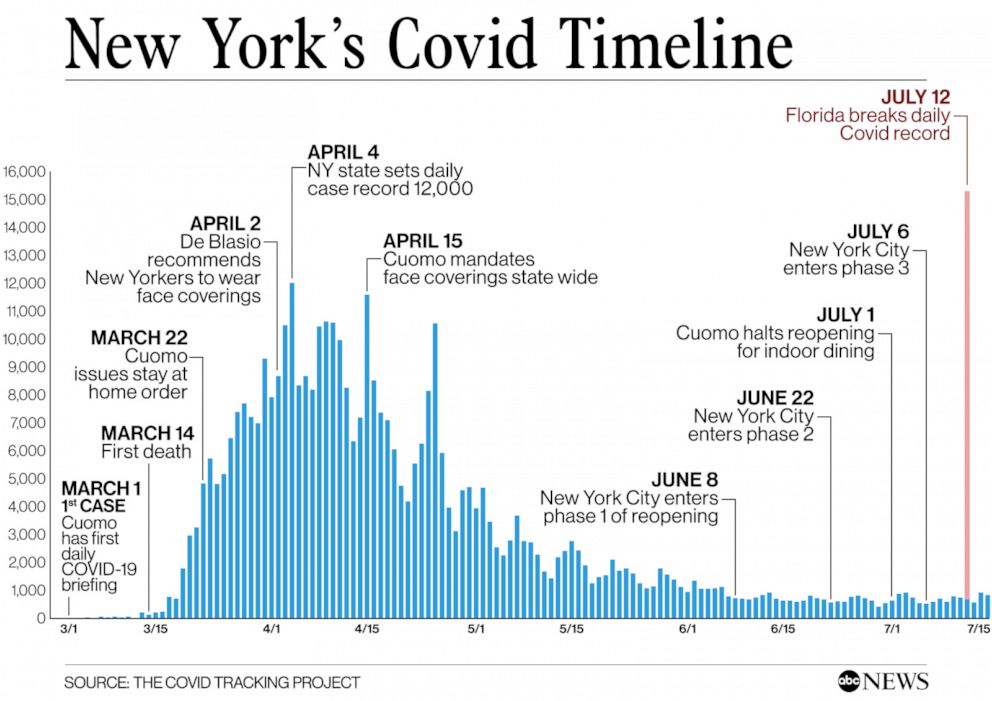
"What we were seeing during April and May was a residual effect of what was going on in March," he told ABC News. "When we started to shut down in March it took three to eight weeks for enough of the impact of that to really affect the epidemic."
With New York currently remaining one of the few states to see a decrease in cases, Braithwaite and other health experts say the state and city its leaders and residents may have to take further steps if they want to avoid a surge.
Late start leads to strict rules
New York recorded its first coronavirus case on March 1, and at first Gov. Andrew Cuomo and New York City Mayor Bill de Blasio assured the public that they could go about their lives normally, but remain cautious.
De Blasio went as far as to tell New Yorkers on March 7 to continue to take the subways and go out. A week later, the city saw its first death, and on March 22, Cuomo issued his stay-at-home order for non-essential businesses.
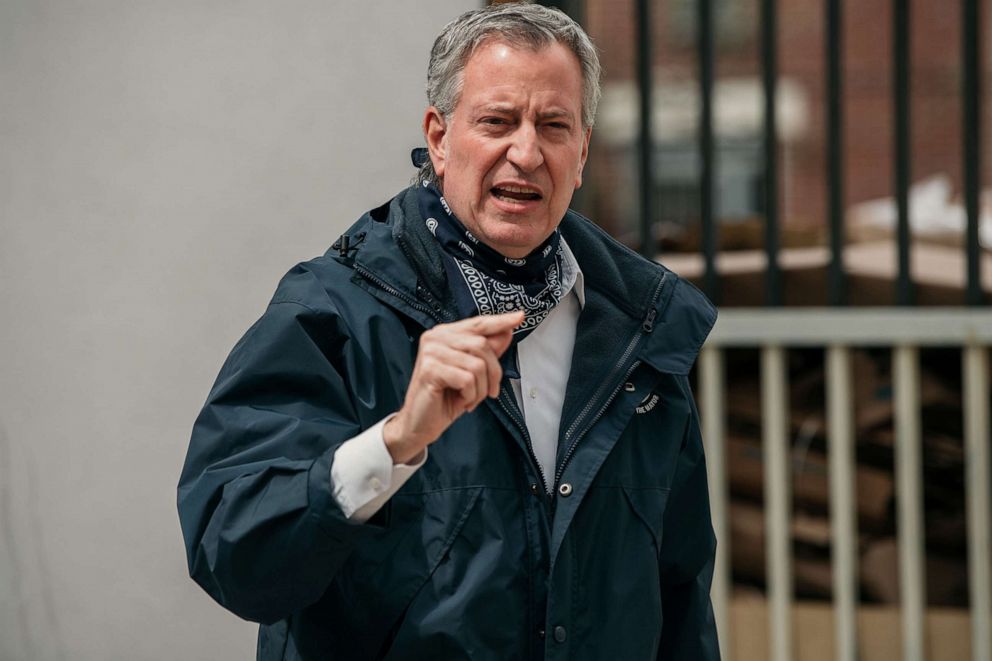
Braithwaite acknowledged that if the leaders had begun their shutdown earlier in March, the case and death total would have been lower, but also said that it would have been hard to motivate New Yorkers to upend their lives that quickly during the early stages of the outbreak. The dire situation forced the leaders and New Yorkers to take it more seriously.
"As a casual observer and citizen, I could not have seen how anyone could have shut down New York if there wasn't such a major crisis playing out," he said.
But from those missed opportunities came a chance to bolster strategies from health experts.
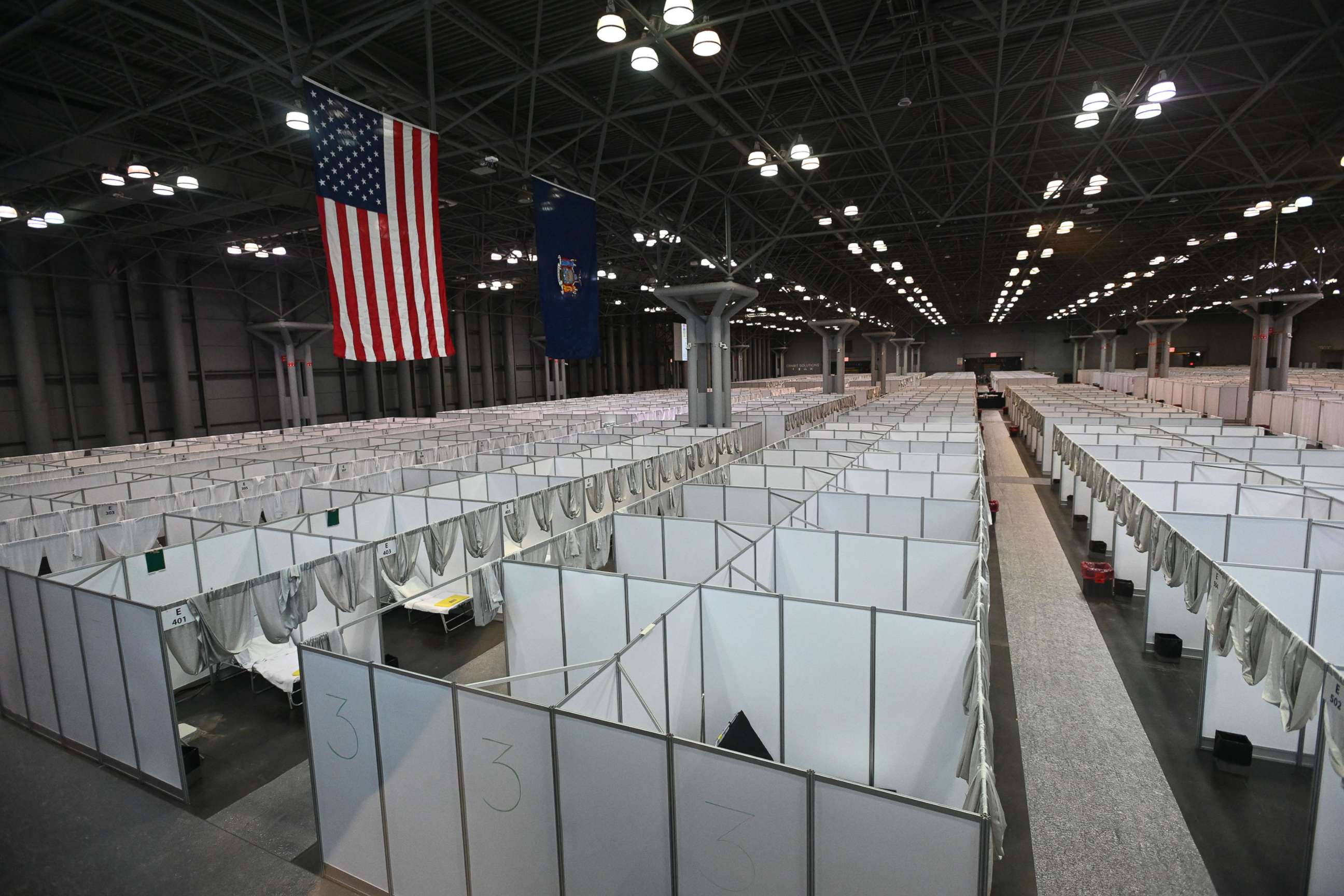
As the cases and deaths rose and hospital spaces were filled up across New York, city and state leaders increased their strict health mandates, ordering that all New Yorkers wear a face covering outdoors in April and maintain social distancing while businesses remained shuttered.
Carol Gomes, the CEO of Stony Brook University Hospital in Suffolk County, told ABC News she believes more people took the governor's orders seriously because of his constant and informative daily news conferences.
While there were some who still blatantly ignored the mandates for face coverings and social distancing, New York residents, by and large, adhered to the health guidance because they were being hit constantly with reminders of that COVID-19 curve, according to Gomes.
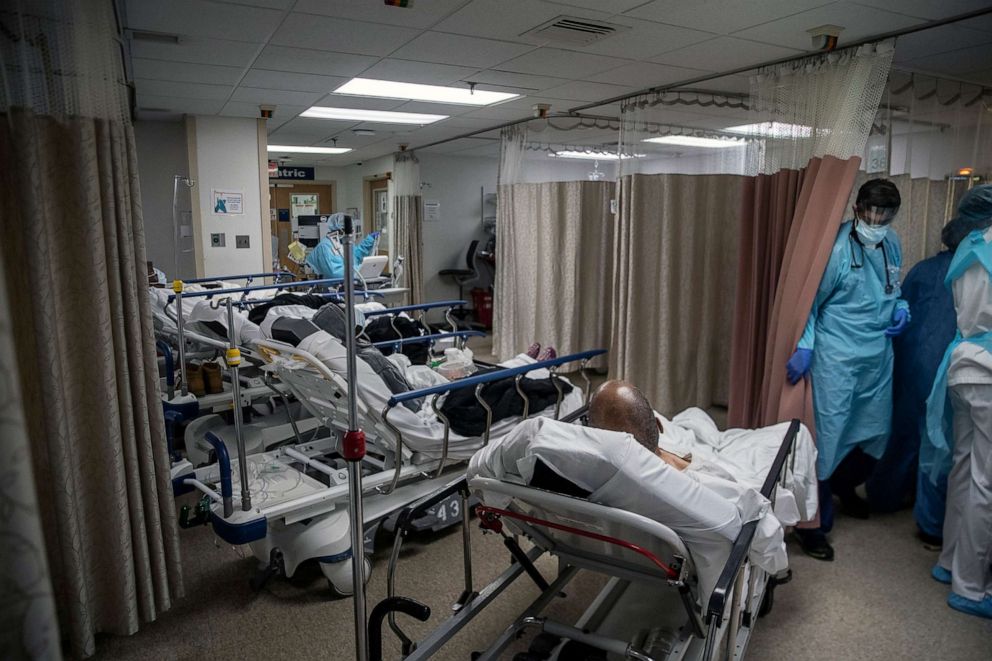
"I really do believe that the focus on the balance was communicating with the public about reducing the spread. You go to supermarkets and everyone was wearing masks," she told ABC News. "There was continuous reinforcement of the orders in our communities."
The efforts paid off, according to Braithwaite, as the data showed cases and deaths were going down throughout the state in April and May.
Reopening slowly
Like most states in the country, New York began to ease back on some of its restrictions in May amid tremendous political pressure to do so from Washington and elsewhere as the pandemic, and the resulting shutdowns, decimated the economy.
As part of the governor's phased reopening, sections of the state had to meet certain criteria, such as a sustained decline in new cases and deaths, a minimum level of available hospital beds and increased testing capability, to reopen some of their non-essential businesses.
Leaders in other states across the country either opened when their cases didn't show signs of decline or refused to take further mitigating measures.
Gomes said New York’s structured plan for reopening was different from other states since localities had to work towards a goal instead of being forced to open with an arbitrary date.
"If there was any suggestion [within counties] that any of those numbers in jeopardy, the phasing would be backed off," she said.
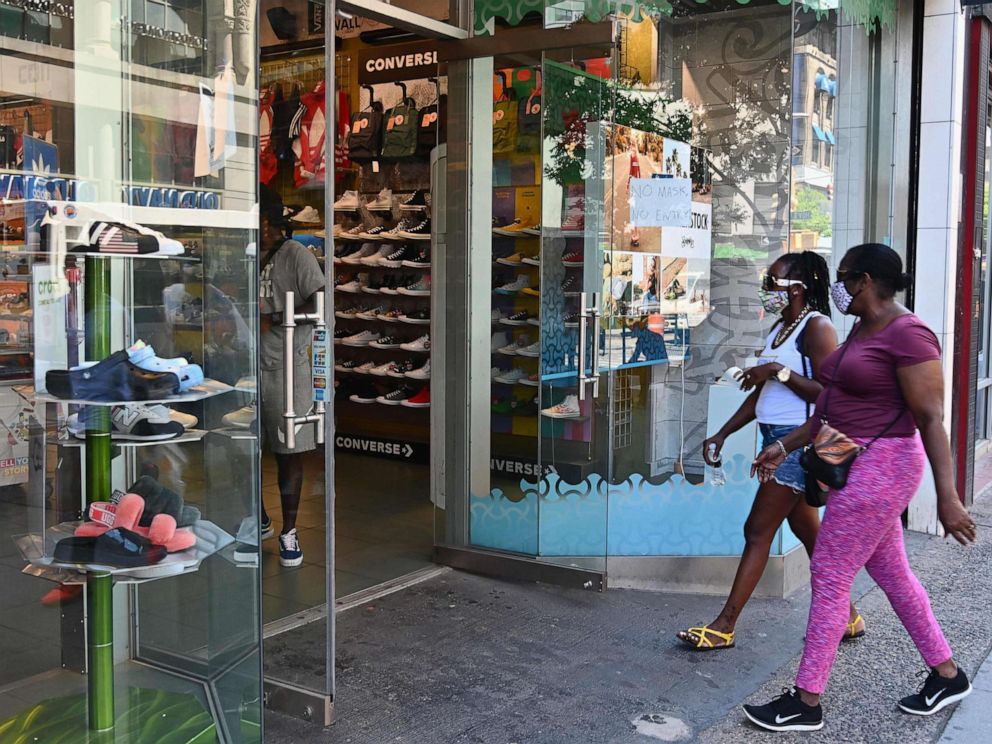
Central New York state towns were the first to go to phase 1, which included strict limits on indoor activities and crowd sizes, on May 15. On June 8, New York City was able to enter that phase.
As of July 16, New York City was in phase 3, which included the opening of salons and religious services, while the rest of the state was in phase 4, which allows for the opening of some indoor businesses, such as malls and art galleries but at 25% capacity.
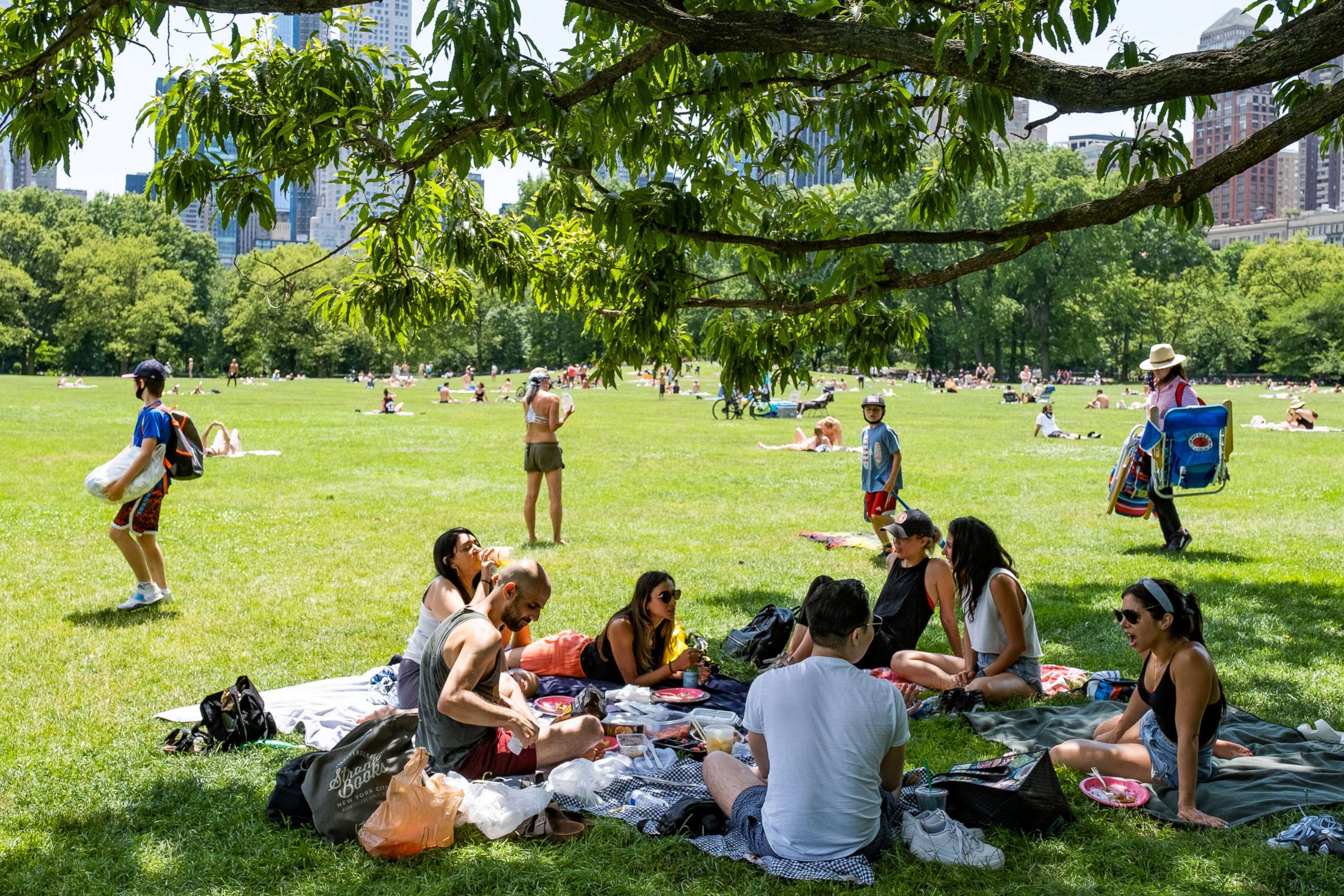
New York City has averaged around 30,000 COVID-19 tests a day since phase one and the positivity rate has been under 2% since that date, according to the city's health department.
The results of the reopening differed greatly from other states that allowed large gatherings and didn't have mask mandates and even ones that had similar strict COVID-19 orders.
A different way elsewhere
States such as Florida, Georgia and Texas did not have statewide mask mandates as they reopened in late April and May and few restrictions on businesses and services that offered indoor activities, according to health experts. This comes even as evidence mounted that mask-wearing and other social distancing measures were making a difference.
Braithwaite said when it comes to California, which initially had a very low case count and was viewed as a model of what to do, poor execution of reopening guidelines eventually sent it down a different path.
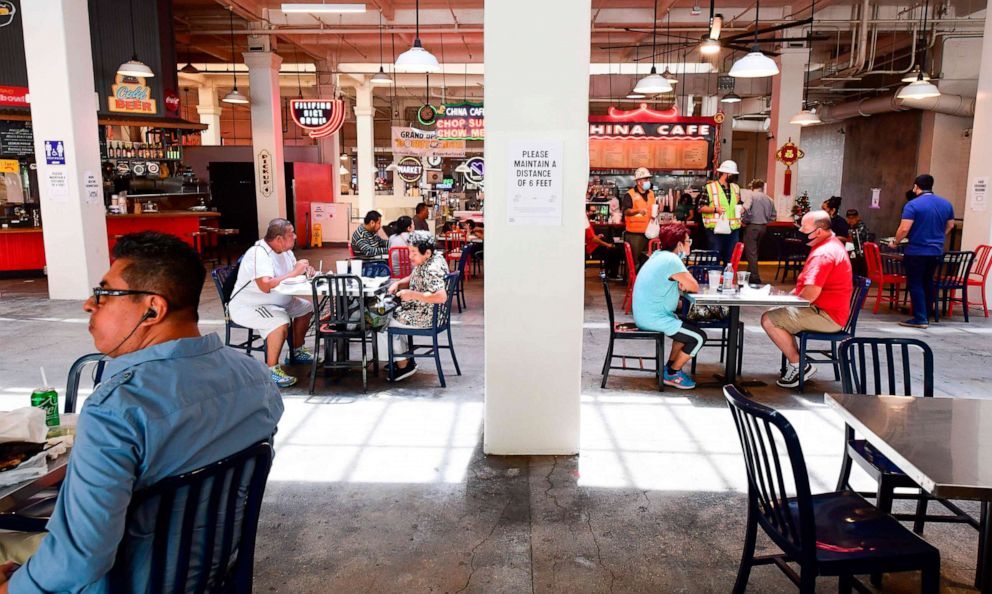
Several locations in California, including San Francisco, were one of the first places in the U.S. to issue shelter-in-place orders in March. In the middle of the month, a statewide shelter in place order went into effect. The average number of new daily never went above 2,000 during the lockdown months, according to California's health department.
But California's guidelines allowed too many places where crowds could gather indoors; including restaurants, bars and gyms, and that has contributed to that state's rise in COVID-19 cases, according to Braithwaite.
In the last two weeks alone, the state saw more than 111,000 new coronavirus cases according to California's Health Department, and on July 13, Gov. Gavin Newsom ultimately reversed his reopening of those businesses such as indoor dining.
A representative for the California Department of Public Health told ABC News that the governor's COVID-19 orders were meant to be flexible, depending on the latest data.
"Governor Newsom has discussed numerous times the need to treat the COVID-19 outbreak with a dimmer switch, with the ability to toggle back on reopening when necessary," the representative said in a statement.
Braithwaite said New York's plan has been more successful than other states because it still puts strict limits on businesses.
"The thing is, we're not reopened," Braithwaite said of New York. "I cannot go to a restaurant inside. I can't see a movie. I can't go to a show…That's how we avoided it. If we really reopened like the other places, we'd be in a different situation now."
The tough road ahead
Braithwaite and other experts warned that New York is still not out of the woods since it is still seeing hundreds of cases a day.
The experts said the state and city leaders' continued cautious approach and adaptive policies will help to keep New Yorkers safe.
On July 1, Cuomo halted all indoor dining in the state, just before New York City was going to allow it for small groups. He also issued mandatory quarantines for anyone coming in from 22 states that have seen COVID cases rise, such as Texas and Florida. Similar orders were put on New Yorkers traveling to those states back in the spring.
Braithwaite said the governor's quarantine order is wise since the data from the rest of the country is showing significant jumps.
"If that isn't carried out, we can easily be besieged from cases from Florida and it could take off again," he said.
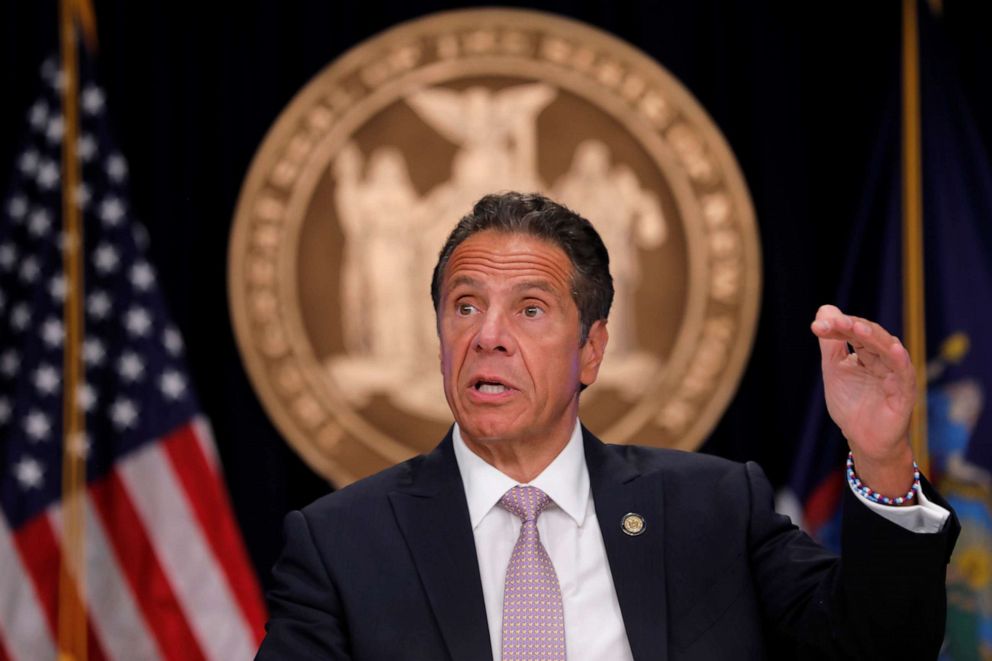
On July 16, Cuomo took even more steps to ensure businesses adhere to the health guidelines by prohibiting alcohol-only sales at New York City restaurants and instituting a "three-strike" rule against businesses that fail to comply with his orders.
Braithwaite said he wouldn't be surprised if the governor instituted future restrictions if New York sees a similar trend of other states.
"He sees of the economic importance of opening up and the importance of not letting people die," he said. "The call will have to be week to week, depending on what we see elsewhere."
Overall, Braithwaite said, New York residents had the earliest first-hand experience of the pandemic's devastating effects and they have seen how the health guidelines have kept them safe.
"In general, this was a very galvanizing experience," he said.
What to know about Coronavirus:
- How it started and how to protect yourself: Coronavirus explained
- What to do if you have symptoms: Coronavirus symptoms
- Tracking the spread in the US and Worldwide: Coronavirus map




